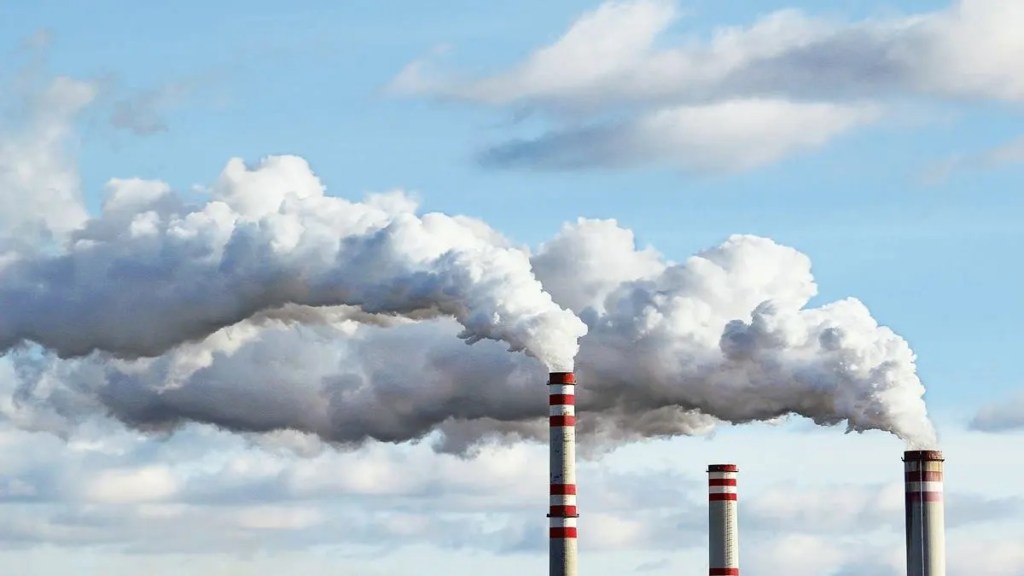By Vaibhav Chaturvedi & Nishtha Singh
The Energy Conservation (Amendment) Bill 2022 was passed in the Rajya Sabha recently, paving the way for the creation of India’s domestic carbon credit trading market, aka an Indian Carbon Market (ICM). This is a significant development as, for the first time, the Government of India will put a price on carbon emissions, an intervention that will have a far-reaching impact in terms of India’s progress towards its 2070 net-zero target. The carbon market is expected to cover, in its ambit, high-emissive industries (for example, power, iron and steel, cement, and aluminium). Also, only large industrial units within these sectors would be covered, as the transaction cost of monitoring thousands of small units is very high. Here we list six key aspects that would be critical to ensure the ICM’s long-term success.
First, the Indian government should set up sector-specific allocations or targets for emission reduction, this will be similar to other countries that started carbon markets but didn’t opt for an auction process for companies right away. (In an auction process, companies themselves buy emission permits.) This process should be followed for the ICM as well. Otherwise, companies will need to undertake complicated analyses in-house to decide the quantum of emission permits they should buy. The initial period should allow companies to understand the trading process better rather than subjecting them to a complicated decision-making process. Eventually, say in a decade or so, the government should move from sector-specific targets to a combined target across sectors and initiate the auction-driven process for better price discovery.
Also Read: Looking Ahead: How green is the data ecosystem?
Second, the sector-specific targets in the initial period should be based on carbon emission intensity rather than absolute emissions. In this sense, the ICM should be similar to China’s carbon market rather than the EU one. This is important because, for a fast-growing economy, setting an absolute emissions target is challenging, even if desirable. The global macroeconomic uncertainties make setting an absolute cap even more challenging. Eventually, as India moves closer to its CO2 emission peaking year, sometime between 2040-45, as the Council on Energy, Environment and Water (CEEW)’s research on net-zero futures suggests, there should be a shift from an emission intensity-based target to an absolute emission reduction target.
Third, the targets for the first decade should neither be too aggressive nor too modest. This is a fine balance that needs to be maintained. There should be two criteria for achieving this balance—one is the impact on output prices, and the other is the impact on value chains. For example, the impact of power sector decarbonisation targets on power prices needs to be understood before finalising sector-specific targets. The impact on MSMEs in the value chain for large industries needs to be understood as well. The government must ensure that the targets are not too lax that they become ineffectual, while at the same time, there are no shocks to the economy and negative impacts across the value chain.
Fourth, the government should always communicate targets for the decade ahead and continue this practice for the long term. It is critical to adhere to the principle of certainty as industry stakeholders make long-term investment decisions. A framework that communicates predictability and certainty should be one of the core guiding principles for the Indian Carbon Market.
Also Read: Budget FY24: Road map for carbon market likely
Fifth, the EU will be rolling out its Carbon Border Adjustment Mechanism (CBAM), essentially to equalise the carbon price between domestic production and imports, and this will sooner than later be imposed on imports from India and elsewhere. This is expected to hit India’s steel and aluminium exports to the EU, among other commodities. The Indian government should understand the interaction effect between CBAM and the ICM carbon price and its implication on India’s high-emission exports. It should use ICM as a lever to engage with the EU and minimise the impact of CBAM on India’s exports to this region.
Finally, the ICM will require sophisticated analytical capabilities for setting emissions targets, penalty for non-compliance, and carbon price floor and ceiling, among other important market aspects. The government should institutionalise the use of analytical approaches, particularly based on quantitative modelling, to inform this process.
The ICM is a bold and ambitious move by the government to demonstrate its strong commitment to climate leadership. All the aspects discussed here would together help ensure a successful ICM and allow it to play a defining role in India’s quest towards the net-zero target.
The author is respectively, fellow, and programme associate, Council on Energy, Environment and Water (CEEW)
